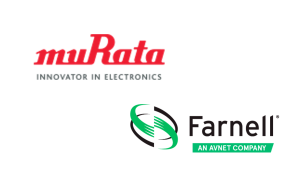
In the dynamic movement of medical technology, the demand for innovation is relentless. At FORTEC UK, we are acutely aware of the critical role that embedded systems play in this evolution, especially as the requirements for medical applications undergo significant transformation. Modern medical devices are not just expected to perform; they are required to excel in computational power, data processing capabilities, and security, all while maintaining a form factor that supports portability and energy efficiency.
The Evolution of Embedded Systems in Healthcare
Embedded systems are pivotal in the development of a wide array of medical devices, from handheld diagnostic tools to sophisticated imaging machinery. These systems are engineered to execute specific tasks within larger devices, providing the brains behind the operation. The advent of advanced processors, augmented memory capacities, and comprehensive connectivity solutions has propelled the capabilities of embedded systems, enabling them to process and relay data with unprecedented speed and accuracy. This evolution is critical for supporting the high-resolution, real-time imaging and seamless device operation necessary in today’s healthcare environment.
Showcasing Axiomtek’s Pioneering Solutions: mBOX602 and CEM561
Axiomtek’s latest innovations, the mBOX602 and CEM561, stand at the forefront of embedded system technology, specifically designed to meet the nuanced needs of medical applications.
mBOX602: The Industrial PC Powerhouse
The mBOX602 is engineered as a medical-grade powerhouse, ideal for a variety of smart healthcare applications. It harnesses the power of the latest 13th/12th Gen Intel® Core™ processors, ensuring that it can tackle the most complex medical software demands with ease. This system supports up to 64GB of DDR4 memory and boasts 4K UHD display capabilities, making it an excellent choice for high-resolution medical imaging and efficient data management. Its comprehensive connectivity features, including 2.5GbE LAN and versatile expansion options, render it perfect for an array of networked medical devices and telehealth platforms. The mBOX602’s blend of reliability and high performance makes it a prime candidate for applications ranging from medical diagnostics to patient monitoring.
CEM561: Tailored Excellence for Medical Device Innovation
The CEM561 module is a testament to flexibility and power, designed to cater to custom medical application requirements. It supports the latest 13th/12th gen Intel® Core™ and Celeron® processors and accommodates dual-channel DDR4 memory up to 64GB. With an extensive array of PCI Express lanes for expansion, high-speed storage capabilities, and comprehensive USB connectivity, the CEM561 facilitates seamless integration with a variety of medical devices and peripherals. The module’s support for TPM 2.0 underscores its commitment to securing sensitive patient data. Its adaptability and robust performance make the CEM561 an unparalleled choice for developing bespoke, next-generation medical devices.
Addressing the Future of Medical Equipment Design
The mBOX602 and CEM561 from Axiomtek embody the advanced features required to meet the evolving demands of medical equipment design, including unparalleled performance, stringent security, and unmatched flexibility. For design electronic engineers dedicated to forging new paths in healthcare technology, these embedded systems offer the reliability, efficiency, and cutting-edge capabilities necessary to redefine the boundaries of medical care.
As we continue to witness advancements in the medical sector, the integration of sophisticated embedded systems like the mBOX602 and CEM561 will be pivotal in crafting medical devices that are not only more effective and efficient but also capable of delivering superior patient care.
For any embedded system requirements for your upcoming medical project, please don’t hesitate to contact us.
 Instrumentation Monthly Test | Measurement | Control
Instrumentation Monthly Test | Measurement | Control








